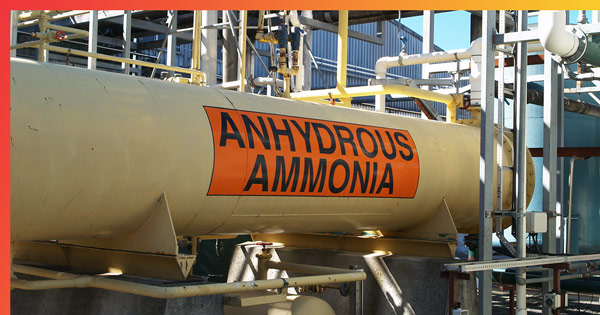INDUSTRIAL CONSULTANTS
Information and Toxicology of Ammonia
Information and Toxicology of Ammonia
Ammonia is a colorless gas in lower concentrations. In higher concentrations it can form a white cloud. An extremely pungent odor is detectable from 5 ppm and becomes irritating at 25 ppm. Liquid ammonia is transported under pressure.
Characteristics of Ammonia
Relative Gas Density: Vapor - 0.6 (air = 1, lighter than air)
Aerosol ->1.0
Specific Gravity: 0.62 (water = 1, lighter than water)
Solubility: - Very soluble in water
pH: 11 +
Ammonia Reactivity
Fire & Explosion Data
LEL: 15% UEL: 28%
It is a flammable gas at concentrations between these limits. This is particularly important in an enclosed area. Presence of oil will increase the fire hazard (LEL as low as 8%). Use flooding quantities of water until well after fire is out. Keep fire-exposed containers cool. Pressurized containers can rupture when overexposed to heat.
DOT Classification: Non-flammable gas.
Ammonia goes through hazardous decomposition at temperatures above 850 °F. Hydrogen and nitrogen are given off possibly resulting in an explosion may result.
Ammonia Exposure Limits
TWA (time weighted average): 8 hours
LC50 (Lethal Concentration 50): <5000 ppm for 30 min.
Ammonia Health Hazards
Ammonia in Eyes
First aid: Flush with water immediately for at least 15 minutes, particularly under the eyelid. See physician.
Ammonia Inhalation
First Aid: Get fresh air. See physician.
Ammonia on Skin
First Aid: Flush with water for at least 15 minutes. See physician.
Ammonia Protective Equipment
The minimum PPE is a full face piece air purifying respirator, and a pair of ammonia rate gloves.
For exposures between TLV and IDLH, use a full-face piece cartridge/canister air-purifying respirator. NEVER use a face shield or goggles for ammonia. They are not suitable. They will get you hurt. ONLY use a full face piece air purifying respirator.
Above the IDLH, use a positive pressure, supplied air respirator, and a totally encapsulating, positive pressure chemical suit.

